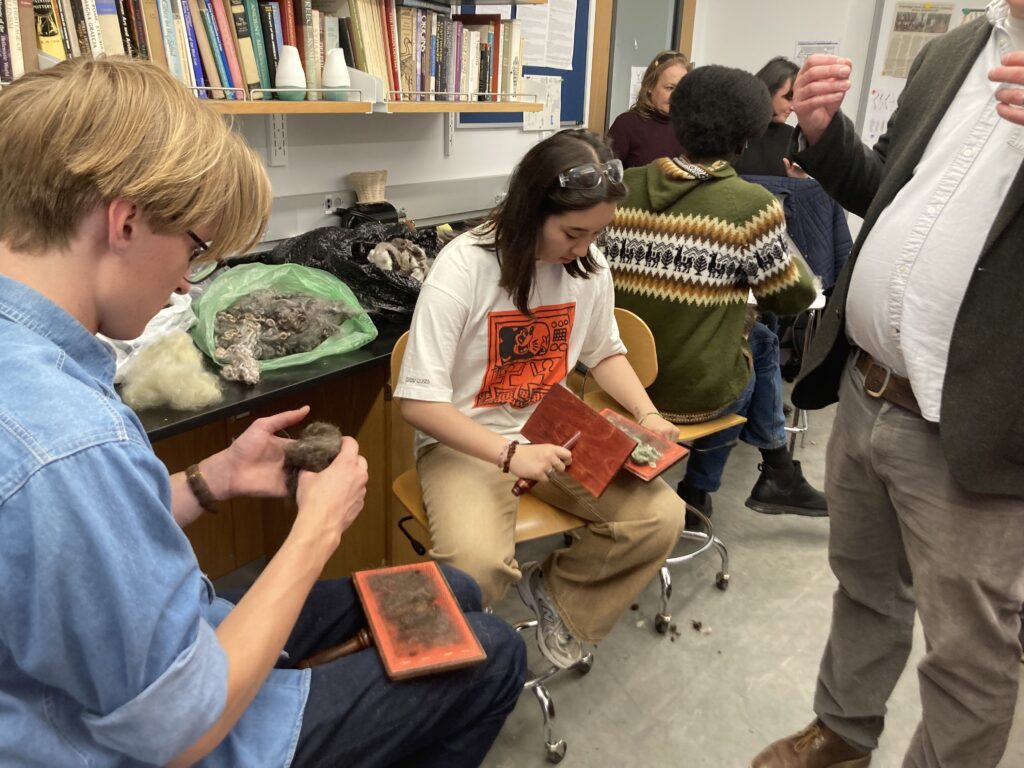This week, I (Alex Wilson) was the data recorder for Group E (Scott Hudson, Giselle Nelson, and myself), and this data report is the summary of our experience with wool-working. This lab was particularly difficult to gather quantitative data from (as others have mentioned), as this effort was entirely experiential and we had no specific variables to experiment with. As a result, my report will consist of our groups’ experiential takeaways and some basic data. We worked alongside Group F (Hope Yu, Ashton Macklin, and Jack Rizzo) at all of our stations, so our findings and experiences with wool-working are nearly identical.
We were not able to get many photos, as there was not really any time to sit and relax/wait during this lab (always be spinning). However, this report is filled with all of the photos of our group that I could find to give a better understanding of the experiential process.
Weaving
Our group started with weaving at the looms as Alejandra Sanchez taught us how to prevent scrunching and properly slip the weft between the warp. After getting the hang of the initial process, we quickly noticed ways that we could improve with time and effort. The thread we used about about 3.5mm thick, resulting in each of us adding approximately 10mm to the tapestry as we wove.
| Time Weaving (minutes) | Rows Weaved | Rows per Minute | |
| Alex Wilson | 14 | 3 | .214 |
| Scott Hudson | 12 minutes | 3 | .25 |
| Giselle Nelson | 12 | 3 | .25 |
Carding
Carding was a much more physical process than weaving or spinning. There were 4 different types of wool to choose from: Soay (the most difficult), Cotswold, Leicester Longwool, and Jacob. Each of these had their own challenges, with the locks of some very difficult to separate. We all picked different types of wool to get a better understanding of how different flocks of sheep would change the wool-working process.

Spinning
The spinning station was interesting, as we had already been spinning for the last several hours, and learned the basics of the activity. As a result, spinning was a bit of a reprieve from the last few hours of work, where we sat and relaxed with our group as we debriefed about the other stations. We talked about how pre-modern wool workers, mostly women, would have used this time to socialize. Our group started with about half an ounce of wool, and all of us got through that initial portion to a varying degree of success, with Giselle making a small ball worth of thread. Overall, we found spinning to be a challenging but positive experience, allowing us to connect with our peers over a pre-modern craft.



0 thoughts on “Group E Lab Data Report: Week 4, Wool-Working”